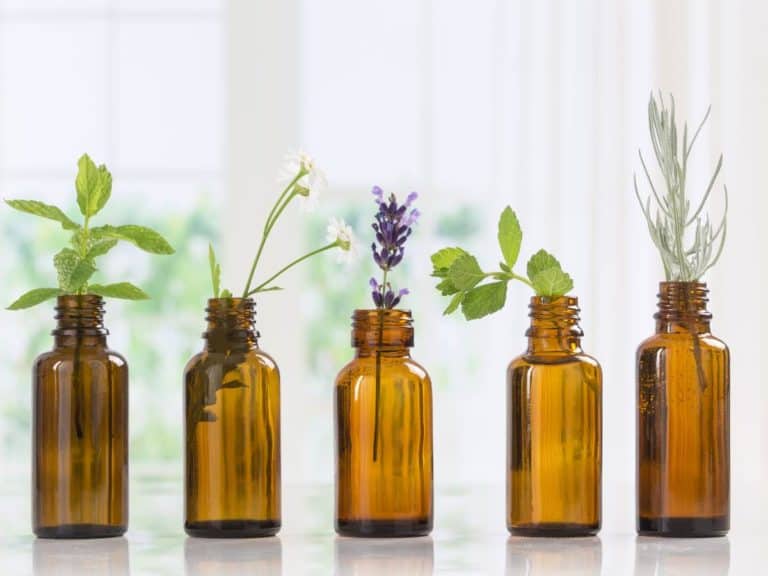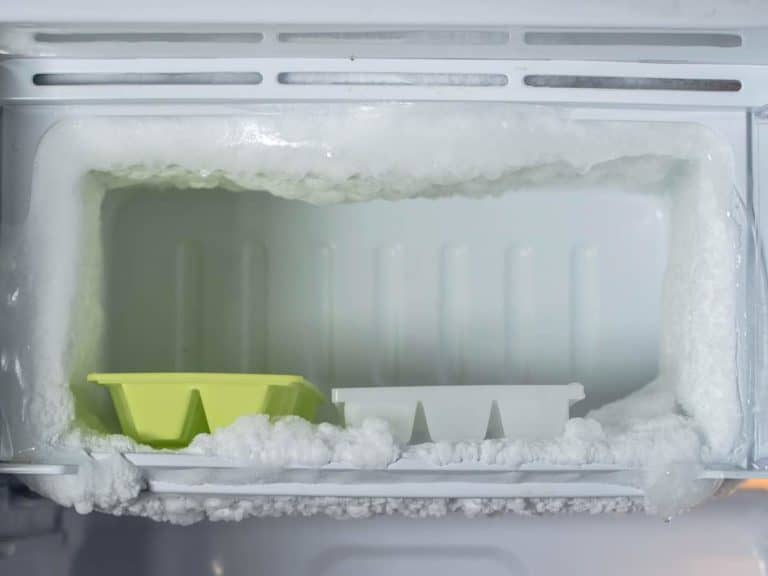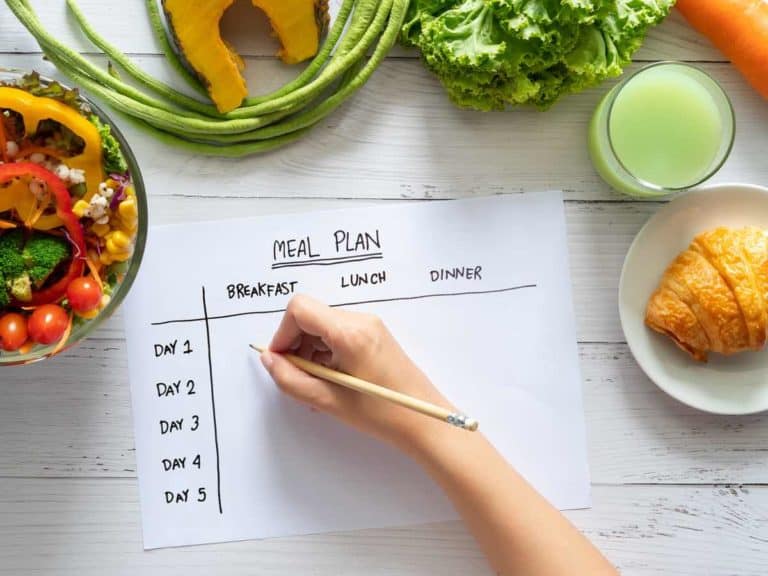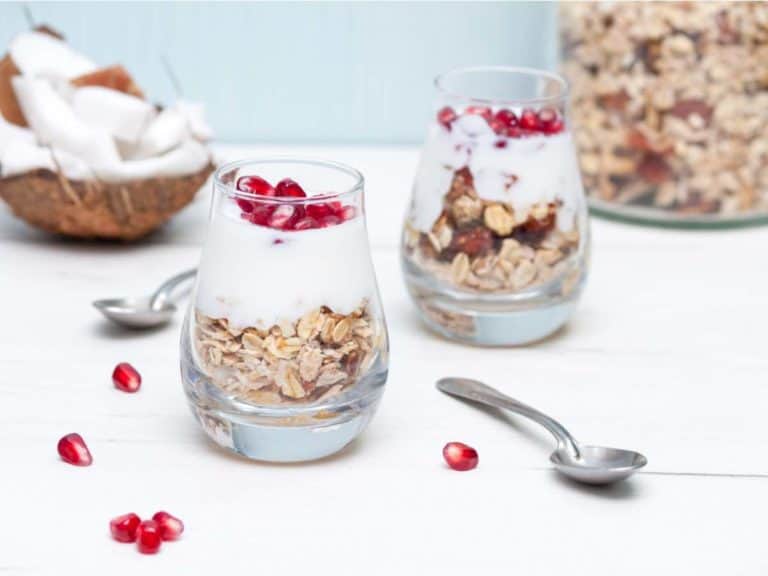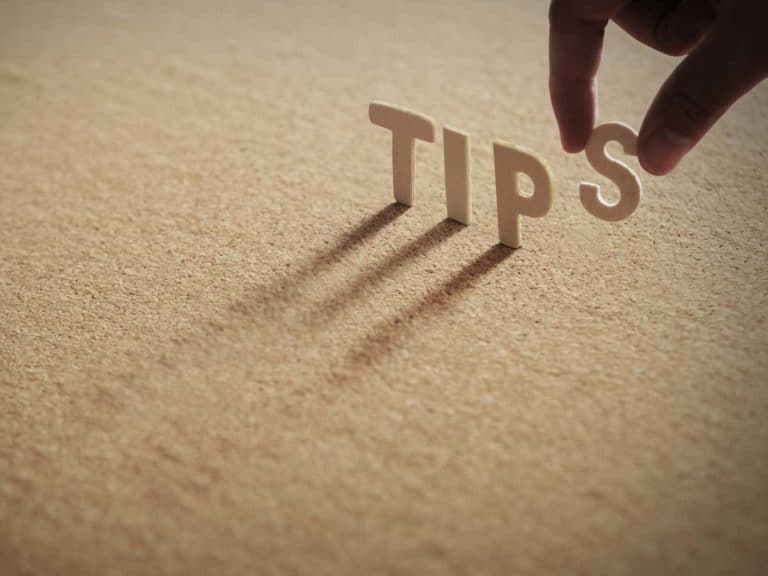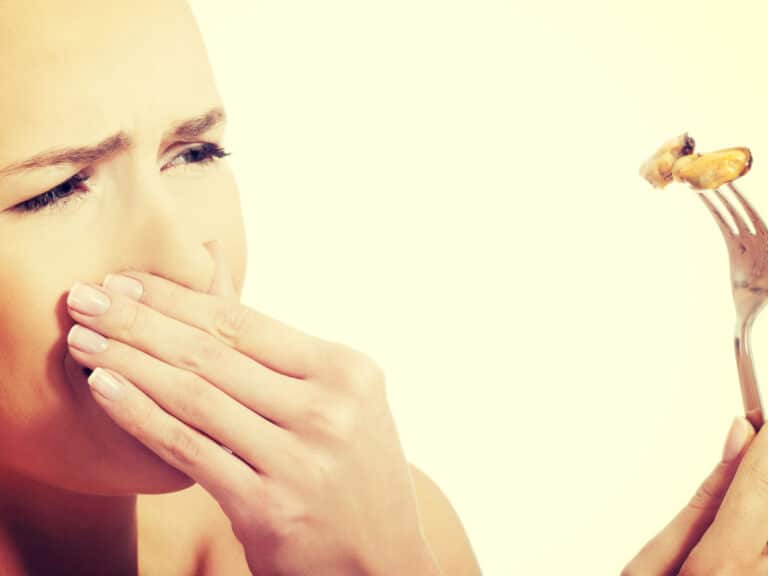How Many Shots of Espresso is Too Much? Health vs Energy
A serving of espresso has about one-third less caffeine than a serving of coffee. But due to its smaller serving size and bolder taste and smoother texture, it can be easy for any coffee aficionado to end up getting more caffeine a day by drinking espresso. And now you may be wondering how many shots of espresso is too much.
More than six shots of espresso a day is too much. According to Consumer Reports, one shot of espresso, which is equivalent to one ounce, contains 63 milligrams of caffeine. Health experts say that up to 400 milligrams of caffeine a day appear to be safe for most adults in a healthy condition.
Below, you will come across some of the most important matters you need to know about espresso and its caffeine content — as well as its impact on your body and overall health. So, if you consider espresso to be your absolute favorite drink or are planning to welcome it to your life for the very first time, don’t stop reading now!
Espresso vs. Coffee: How are They Brewed?
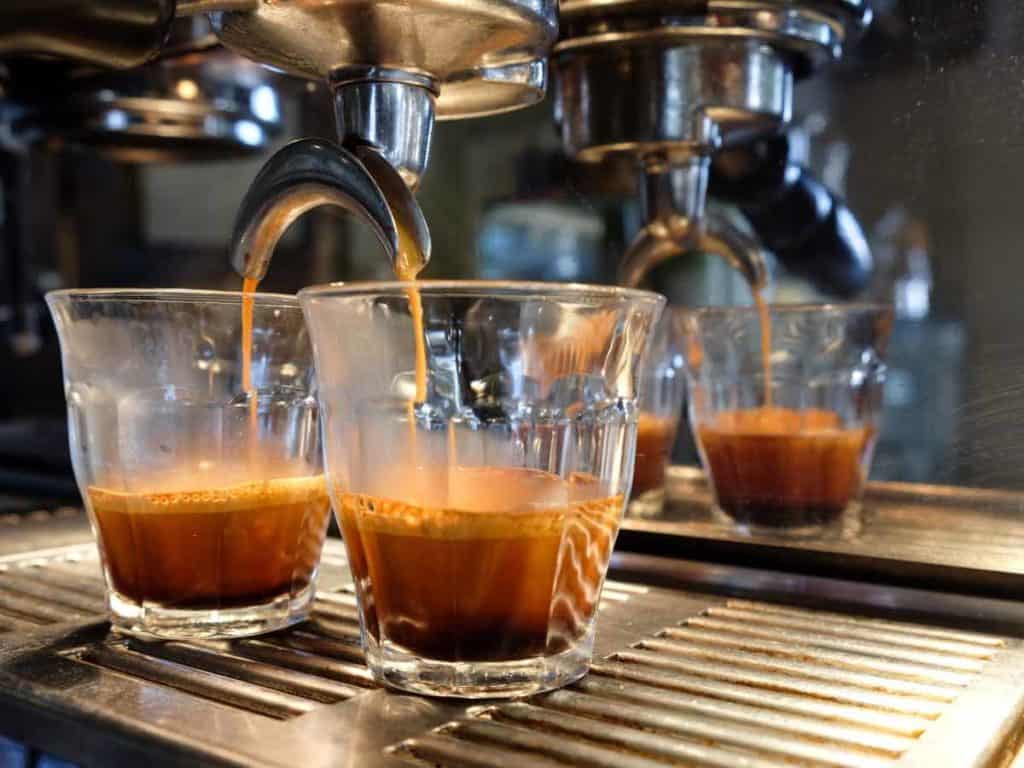
Before anything else, let’s get one thing straight. And it’s none other than the fact that espresso and coffee are from coffee beans. In other words, both of them are types of coffee — and some of the most favorite caffeinated drinks all over the planet, too. However, they are different when it comes to the way they’re brewed.
And because they are brewed in different ways, espresso and coffee have different qualities. They include the taste, aroma, caffeine content and serving size.
It’s no secret that coffee is brewed by pouring hot water onto ground coffee beans. From there, gravity springs into action, causing the hot water mixed with the coffee grounds to drain through the coffee filter and end up in the coffee pot. It’s a process that lasts for about five long minutes, but it’s a time-honored and foolproof way to make coffee.
Espresso, on the other hand, is brewed by pressurizing and shooting hot water through the coffee grounds. Espresso coffee grounds, by the way, are finer than the coffee grounds used for making other coffee types.
And this brings us to a pressing question…
How much pressure does an espresso machine have?
In terms of pressure, the industry standard for an espresso machine is nine bars. If the amount of pressure at the espresso machine’s puck, the filter basket with the coffee grounds, is less than nine bars, the resulting drink is not espresso. Some say that 15 bars make the best espresso.
Most espresso machines can yield pressure anywhere from seven to nine bars. Some espresso machines can yield up to 15 to 19 bars of pressure. However, the majority of coffee shops use espresso machines with nine bars of pressure.
Nine bars of pressure is equivalent to 130 pounds per square inch (PSI). To give you an idea, 130 PSI is roughly twice the pressure inside an average truck tire. To experience the amount of pressure the coffee grounds get while they are being brewed in an espresso machine, you would have to be 300 feet deep in the ocean.
As mentioned earlier, some argue that the best espresso is something that comes out of an espresso machine capable of yielding 15 bars of pressure. However, this is not always true.
While hot water with a pressure of 15 bars can force more coffee flavors and oils from the coffee grounds than hot water with a pressure of nine bars alright, that’s not the only thing that counts. The quality of the coffee grounds matter, too. There’s no point in using 15 bars of pressure if inferior coffee grounds are used. More is not always better.
Going back to our current topic, which is espresso versus coffee…
If brewing coffee takes around five minutes to complete, making espresso, on the other hand, takes 25 to 30 seconds only. This means that you can get your caffeine fix so much faster by opting for espresso rather than coffee. Even though it’s true that brewing a shot of espresso is faster than brewing a cup of coffee, espresso still has a very rich taste.
Besides the taste, espresso has many other perks to offer, too. Keep on reading to get to know them!
The Unique Properties of Espresso
While both espresso and coffee are types of coffee, the difference in the way these drinks are brewed gives them different properties. Refrain from assuming that espresso is just strong coffee served in a smaller cup. There are numerous things about espresso responsible for making it more expensive than coffee.
Espresso is different from coffee in terms of taste, aroma, acidity, caffeine content and appearance. Let’s get to know the things that set espresso apart from coffee one by one.
Taste
Many people who are unhappy with just a cup of coffee order espresso to get satisfaction. On the other hand, many who wish to steer clear of the side effects of caffeine stay away from espresso to avoid being anxious and having heart palpitations. And this brings us to a burning question…
Is espresso stronger than coffee?
When it comes to the taste, espresso is stronger than coffee. This is why many serious coffee drinkers are already pleased with taking just a one-ounce serving of espresso. However, when it comes to caffeine content, one cup (eight ounces) of coffee is stronger than one shot of espresso.
Earlier, it was mentioned that it takes only anywhere from 25 to 30 seconds to make a shot of espresso. Despite this, espresso has a richer and stronger taste than coffee, and it’s for a couple of reasons:
- Coffee beans for making espresso are roasted longer and darker. As a general rule of thumb, the longer and darker coffee beans are roasted, the richer the taste of the resulting drink. This gives the impression that espresso is stronger than coffee. Espresso is not stronger — it’s just more flavorful than coffee.
- Espresso has more rich coffee oils. Pressurized near-boiling water drives potent coffee oils out of ground coffee beans better than hot water relying on gravity does. And because making espresso does not require the use of a coffee filter, you can rest assured that all extracted coffee oils will end up in your demitasse cup.
Besides having a more concentrated taste than coffee, espresso also tends to have a longer aftertaste. It’s for this reason exactly why many people remain satisfied for a long time after having just one shot of espresso.
Related Post: How To Store Champagne After Opening
Aroma
Because pressurized water can extract more coffee goodness from the coffee grounds, it doesn’t come as a surprise why espresso has a more defined aroma than coffee. Also a contributing factor to espresso’s bold smell is the fact that the coffee grounds used are dark roast — light roast coffee grounds have a subtler smell.
Just about any type of coffee beans can be used for making espresso. Due to this, espresso from one coffee shop to the other can smell different from one another.
For instance, espresso made from Arabica coffee beans tends to have a fruity or floral aroma. On the other hand, espresso brewed from Robusta coffee beans has the tendency to exhibit an earthy smell. Espresso from Liberica coffee beans tend to have an intense woody and smoky fragrance.
Acidity
Many people with acid reflux who cannot stay away from coffee go for espresso. That’s because it is less likely to cause hyperacidity, which is one of the main (and most uncomfortable) symptoms of acid reflux.
Two reasons exist why espresso is not as acidic as coffee:
- Longer roasting. Roasting coffee beans for a long time causes them to be darker and have a more full-bodied flavor, too. And based on a study published back in 2010, roasting coffee beans longer also causes the production of a chemical that prevents excessive production of hydrochloric acid in the stomach.
- Less brewing time. Even though pressurized hot water squeezes more coffee flavors and oils out of ground coffee beans, it’s not that very good at extracting acidic compounds in ground coffee beans. Since dark roast coffee grounds have less acid to begin with, a shot of espresso is not as acidic as coffee.
Just because espresso is less acidic doesn’t mean that it won’t cause acid reflux. There is something about espresso that can still trigger this digestive problem. And it’s none other than caffeine.
According to health experts, caffeine can cause the lower esophageal sphincter (LES) to relax. The LES is a ring of muscles that separates the esophagus from the stomach. When the LES relaxes due to caffeine or any other causative factor, hydrochloric acid in the stomach escapes and irritates the esophagus.
Caffeine
Speaking of caffeine, one of the things that separate espresso from coffee is the amount of caffeine around. Many people think that espresso has more caffeine than coffee because espresso has a stronger and more concentrated taste. However, it’s important to note that the flavor does not say anything about the caffeine content.
Believe it or not, espresso has less caffeine than coffee. As a matter of fact, a shot of espresso has about only half the amount of caffeine in a cup of coffee!
And this takes us to a very important question…
How much caffeine is in a shot of espresso?
According to the website of Consumer Reports, a shot of espresso has 63 milligrams of caffeine. One shot of espresso is equivalent to one ounce. On the other hand, a cup of coffee has anywhere from 95 milligrams to 128 milligrams of caffeine. One cup of coffee is equivalent to eight ounces.
When the serving size is considered, espresso packs less caffeine than coffee. Espresso is served in a demitasse cup, whose size is several times smaller than a cup of coffee.
However, it is a different matter if the serving sizes of espresso and coffee are made the same. If coffee is served in a demitasse cup like espresso, then it will have 12 milligrams to 16 milligrams of caffeine only. One cup of coffee is equivalent to eight shots of espresso. A cup is equivalent to eight ounces, while a demitasse cup is equivalent to one ounce.
And if espresso is served in a cup just like coffee, then it will have a whopping 504 milligrams of caffeine!
So, in a nutshell, it’s not true that espresso can make you more alert (or anxious) than coffee because it has a bolder taste and thus higher caffeine content. Per serving, espresso has less caffeine than coffee.
Looks
Color-wise, you can think of espresso as dark coffee with a little creamer. It’s very dark brown that appears black at first glance. And in good direct lighting, you might notice hints of reddish tones.
When it comes to the consistency, espresso is slightly thicker than coffee. That’s because less near-boiling water is used to brew a lot of finely-ground coffee beans. In contrast, more hot water is used to brew coarsely-ground coffee beans. The difference in the coffee grounds to water ratio has a substantial effect on the consistency.
Let’s take a look at the differences in the ratio of the coffee grounds to water of the two drinks:
| Espresso | 1:2 |
| Coffee | 1:15 |
Besides the consistency, there is one more thing that sets espresso apart from coffee in terms of appearance. And it’s none other than the presence of what’s called the crema.
What is crema in espresso?
Also called coffee crema, crema is the reddish-brown froth floating on the top of espresso. Composed of tiny air bubbles, the crema is thicker and more flavorful than espresso. The crema makes espresso richer and smoother, too. It is also responsible for the long-lasting aftertaste of espresso.
Most people prefer to stir the crema into the espresso. It’s because it has a bitter taste. As a matter of fact, many find the taste of crema to be too bitter, which can make drinking espresso a less delightful experience.
Some coffee experts suggest scraping off the crema before you enjoy a shot of espresso. While the presence of a thick crema is an indicator of a well-made espresso, they say that it can also get in the way of your enjoyment of espresso’s flavor. Scraping off the crema beforehand, they add, also helps to clean up the texture on the drinker’s tongue.
The crema forms because exposure of the ground coffee beans to pressurized hot water causes carbon dioxide, which came into being while the coffee beans were being roasted, to escape.
Little bubbles of carbon dioxide then stick to the natural oils from ground coffee beans. And because air is lighter than water, those carbon dioxide bubbles rise to the surface of espresso. The crema can stay around for up to 40 long minutes. However, no espresso lover takes that long to enjoy a shot of their favorite drink.
Before we talk about other essential matters on espresso, let’s take a quick look at the summary of the key differences between espresso and coffee…
| ESPRESSO | COFFEE | |
|---|---|---|
| Brewing time | 25 to 30 seconds | 5 minutes |
| Coffee grind size | Fine | Coarse |
| Serving size | 1 ounce | 8 ounces |
| Caffeine content | 63 milligrams | 95 milligrams to 128 milligrams |
| Taste | Intense | Rounded and simple |
| Aroma | Stronger | Weaker |
| Consistency | Thicker | Thinner |
| Acidity level | Lower | Higher |
| Appearance | With crema | Without crema |
Different Espresso Shot Types
It’s not just a regular shot of espresso that you can order from coffee shops. Aside from a single one-ounce serving of espresso that contains 63 milligrams of caffeine, there are other types of espresso shots that you may give a try, too. Some of them consist of multiple shots, while others come with other ingredients.
Let’s take a quick look at some espresso type shots:
- Doppio. If you want two doses of espresso, don’t order two shots of it. Order a doppio instead. Put simply, a doppio is two ounces of espresso. Needless to say, a single serving has 126 milligrams of caffeine.
- Lungo. It’s just like doppio in the sense that it’s two ounces of espresso. However, lungo is more concentrated than a doppio. That’s because the brewing time is 30 to 50 seconds, instead of the usual 25 to 30 seconds.
- Ristretto. If you think that espresso’s serving size is too small, think again. A serving of ristretto is slightly less than one ounce. But that’s okay because, compared to espresso, it is more concentrated.
- Macchiato. No, this is not the same as the gigantic hot or cold caramel macchiato popular among coffee house visitors. In the world of espresso, macchiato is two ounces of espresso with a little foamed milk.
- Café noisette. Like macchiato, Café noisette is a double shot of espresso, but with an ounce of steamed milk instead of a dash of foamed milk. Noisette is the French word for hazelnut, which is the color of this drink.
Besides the different types of espresso shots, there are various kinds of espresso-based drinks, too. This is when it can become easy for you to have more caffeine a day than necessary. Some of these caffeinated beverages pack more than one shot of espresso per serving. Due to this, getting acquainted with their caffeine content is a must.
Here’s a table of espresso-based drinks and how many espresso shots each of them has:
| NAME | NUMBER OF ESPRESSO SHOTS |
|---|---|
| Short americano | 1 |
| Tall americano | 2 |
| Grande americano | 3 |
| Venti americano | 4 |
| Short latte | 1 |
| Tall latte | 1 |
| Grande latte | 2 |
| Iced grande latte | 3 |
| Venti latte | 2 |
| Short macchiato | 1 |
| Tall macchiato | 1 |
| Grande macchiato | 2 |
| Venti macchiato | 3 |
| Short cappuccino | 1 |
| Tall cappuccino | 1 |
| Grande cappuccino | 2 |
| Venti cappuccino | 2 |
| Short mocha | 2 |
| Tall mocha | 2 |
| Grande mocha | 2 |
| Venti mocha | 2 |
| Short flat white | 2 |
| Tall flat white | 2 |
| Grande flat white | 3 |
| Venti flat white | 4 |
| Short con panna | 2 |
| Tall con panna | 2 |
| Grande con panna | 2 |
| Venti con panna | 2 |
Based on the table above, it can be easy to get a lot of caffeine from a serving of an espresso-based drink. Ordering one with four shots of espresso can cause you to get more than half of the safe dose of caffeine per day.
Health Benefits of Espresso
Coffee beans are not beans, from a technical point of view. They are the seeds of coffee cherries, which are the fruits that the coffee plant bears. But because coffee beans look like true beans, they are referred to as beans.
Like other seeds such as flax seeds and sesame seeds, coffee beans contain nutrients. Some of the nutrients in coffee beans include potassium, magnesium, manganese, riboflavin (vitamin B2), pantothenic acid (vitamin B5) and niacin (vitamin B3). Coffee beans are also packed with antioxidants and healthy fats and oils.
Because of the many nutrients in coffee beans, espresso is healthy. As a matter of fact, it is said to be healthier than coffee, and it’s for the following reasons:
- Pressurized near-boiling hot water pushes out more nutrients from ground coffee beans.
- The absence of a coffee filter allows the extracted nutrients to end up in the demitasse cup.
Most coffee-based drinks can do more harm than good. This is especially true if they are taken in excessive amounts. It’s for the fact that they contain all kinds of ingredients, many of which are packed with calories and fat, to make them look and taste fancy. Needless to say, too much of them can wreak havoc on the figure and overall health, too.
Related Post: Why Do Bodybuilders Eat Raw Eggs
Since espresso has nothing but water that contains coffee extracts, a shot of it has two calories only. However, it is a different story when espresso in espresso-based drinks is the one being talked about.
Here are some of the most surprising health benefits of espresso:
Lowered diabetes risk
Studies show that certain compounds in espresso may help improve insulin sensitivity. This allows the cells of the body to utilize sugar so much better, thus keeping sugar from collecting in the bloodstream.
And because espresso is served without any added sugar, high blood sugar levels can be kept in check.
Lowered risk of certain types of cancer
Earlier, it was mentioned that some of the nutrients in espresso are antioxidants. Put simply, antioxidants are molecules that neutralize free radicals before they harm healthy cells of the body. Free radicals may cause damage to the various parts of the cells, especially the DNA. It’s because of this why they may cause cancer to come into being.
Since espresso is loaded with free radical-fighting antioxidants, drinking it on a regular basis may help fend off certain types of cancer. Studies say that espresso may lower the risk of cancer of the colon, pancreas, prostate, liver and skin.
Lowered heart disease risk
Moderate intake of espresso may help prevent heart disease from striking. It’s all because of the antioxidant content of espresso — antioxidants stop cholesterol molecules from turning into substances that can clog the arteries.
However, it’s a different matter if you drink excessive amounts of espresso a day and are sensitive to caffeine. Instead of your heart being protected, it may be placed in danger. Later, we will discuss this when we get to the many dangers of drinking lots of espresso. So make sure that you keep on reading!
Improved concentration and memory
Everyone knows that caffeine in espresso can cause alertness. What not a lot of people know is that it can also increase one’s ability to concentrate. That’s because espresso, or any other drink with caffeine in it, helps boost the activity of dopamine, which is a feel-good hormone that helps keep you stay focused and driven.
And since we’re on this topic, let’s answer this related question…
How many shots of espresso will keep me awake?
Most people need anywhere from 100 milligrams to 200 milligrams of caffeine to stay awake. Since one ounce of espresso has 63 milligrams of caffeine only, having two shots is needed by some to remain alert. People sensitive to caffeine, however, may stay awake by having just one espresso shot.
Studies also say that espresso may help the brain store and recall pieces of information so much better.
Optimized body weight
Espresso is served without any additional ingredients, including those that are loaded with calories and fat. It’s due to this why, as mentioned earlier, a shot of espresso has two calories only. Espresso is perfect for people who wish to lose excess pounds or keep their current weight intact.
There are some other reasons why espresso is great for staying in shape. First, its caffeine content can help speed up the metabolism. Second, drinking espresso can help suppress the appetite, thus helping to reduce food intake.
Lifted mood
Because espresso has enough caffeine to enhance the activity of the feel-good hormone called dopamine, drinking it may help ease depression.
However, people who are sensitive to caffeine and prone to being anxious should limit their intake of espresso. Otherwise, they may feel restless and experience all sorts of unusual and uncomfortable physical sensations. Like when consuming other food and beverages with health perks, having espresso in moderation is the key.
Harmful Effects of Too Much Espresso
Alas, while there are many health benefits offered by espresso, there are health dangers, too. This is true if too much espresso is taken. It can be easy for anyone who truly loves his or her coffee to end up drinking more espresso than necessary, given the small serving size and delicious taste.
Caffeine — this is what makes drinking excessive amounts of espresso a serious matter.
It was mentioned earlier that, according to health experts, up to 400 milligrams of caffeine a day seem to be safe for most healthy adults. Having more than this amount may cause side effects to come into being. If you are caffeine-sensitive, experiencing all sorts of side effects is possible even before reaching the 400-milligram limit.
Here are some of the most common side effects of too much espresso intake:
- Headache
- Digestive issues
- Anxiety
- Irritability
- Jitteriness
- Insomnia
- Frequent urination
- Heart palpitations
- High blood pressure
The last few side effects of having lots and lots of shots of espresso have something to do with the heart. It’s for this reason why it is possible for a person to die from caffeine overdose. The lethal dose of caffeine is about 10,000 milligrams. However, dying from caffeine overdose due to having lots of espresso is rare.
How many shots of espresso can kill you?
If the lethal dose of caffeine is roughly 10,000 milligrams and there are 63 milligrams of caffeine in a shot of espresso, then a person will have to drink 159 shots of espresso one after the other for 10,000 milligrams of caffeine to accumulate in the bloodstream and to die from caffeine toxicity.
Your stomach can hold anywhere from 51 ounces to 135 ounces of fluid. Because of this, it’s impossible to fit 159 shots of espresso in your stomach all at once — one shot of espresso is equivalent to one ounce.
There is another reason why it is rare for you to die of caffeine toxicity just by having lots of espresso. Before you get close to the 10,000-milligram lethal dose, you will experience nausea and vomiting, which will keep you from having more espresso and your bloodstream from collecting more caffeine.
It’s possible for caffeine toxicity to happen if different sources of caffeine are consumed all at the same time. Some of them include espresso, energy drinks and caffeine pills.
Related Post: Is Cold Brew Coffee Stronger Than Other Coffee Types?
How many shots of espresso can you get at Starbucks?
There is no limit to the number of shots a customer can get at Starbucks. One Reddit user says that the coffee shop at which he works does not limit the customers as to how many espresso shots they want to order. Another Reddit user says that the POS allows them to enter up to 99 espresso shots.
Ordering and drinking up to 99 shots of espresso at Starbucks or any other coffee shop for you to drink is impossible. That’s because, by the time that you had your sixth shot (400 milligrams of caffeine), your pounding headache and nausea would have caused you to leave the premises right away.
Just Before You Order a Shot of Espresso
It’s true that espresso tastes and smells stronger than coffee. Despite this, it has less caffeine. However, it’s only because of the small serving size. Per ounce, espresso has 63 milligrams of caffeine and coffee has 12 milligrams to 16 milligrams of caffeine — a cup of coffee is equivalent to eight ounces with a total of 95 milligrams to 128 milligrams of caffeine.
Ending up with caffeine toxicity from drinking 159 shots of espresso (equivalent to 10,000 milligrams of caffeine, which is the lethal dose) in one sitting is quite impossible.
However, it doesn’t mean that you won’t experience the unpleasant side effects of drinking several shots of espresso. If you are sensitive to caffeine, it is a good idea to keep your daily intake of espresso to six shots only. Six one-ounce servings of espresso yield 400 milligrams of caffeine, which is the limit a day for most healthy adults.
Read Next: Can Espresso Be Made With Any Coffee?
